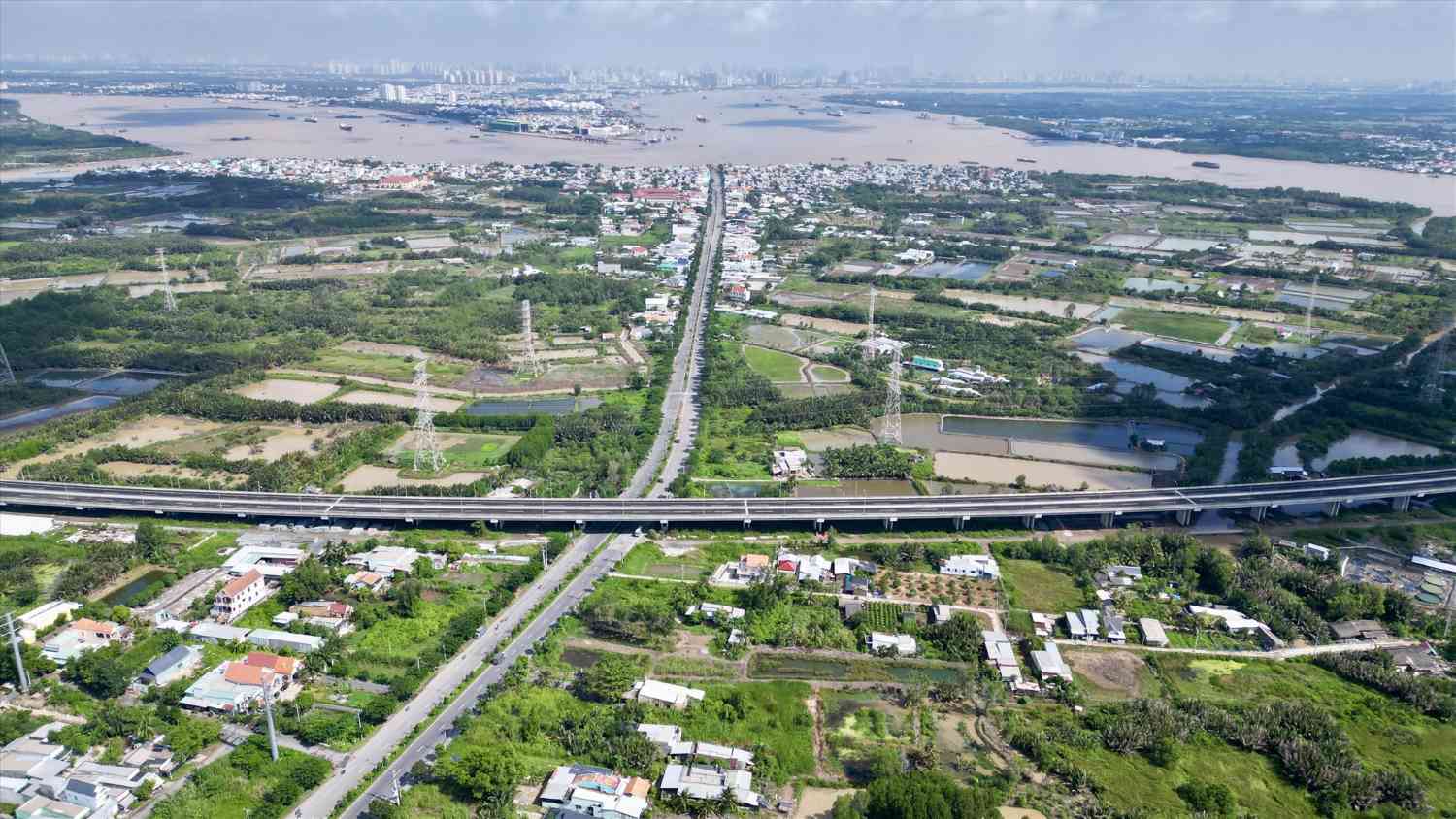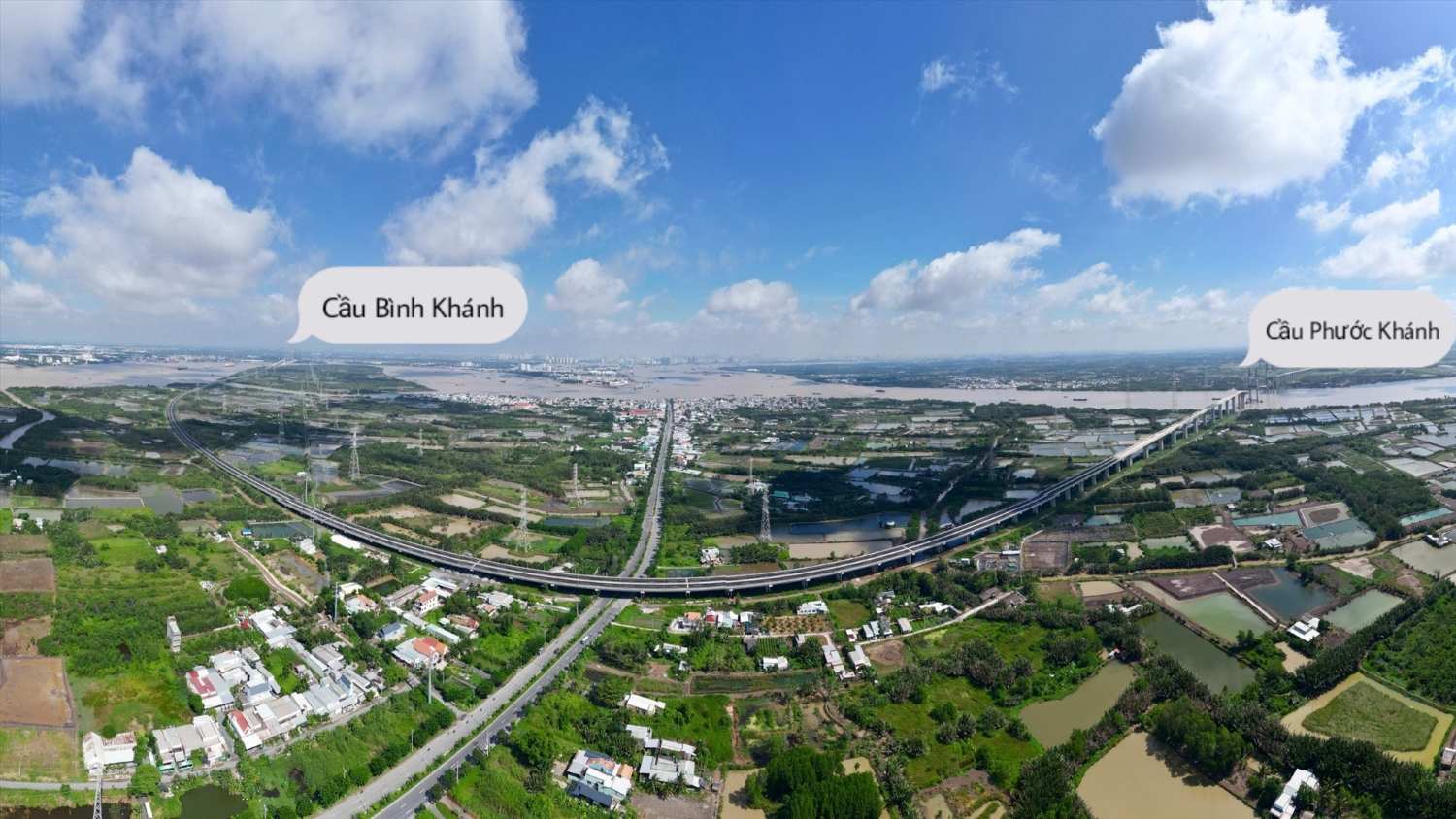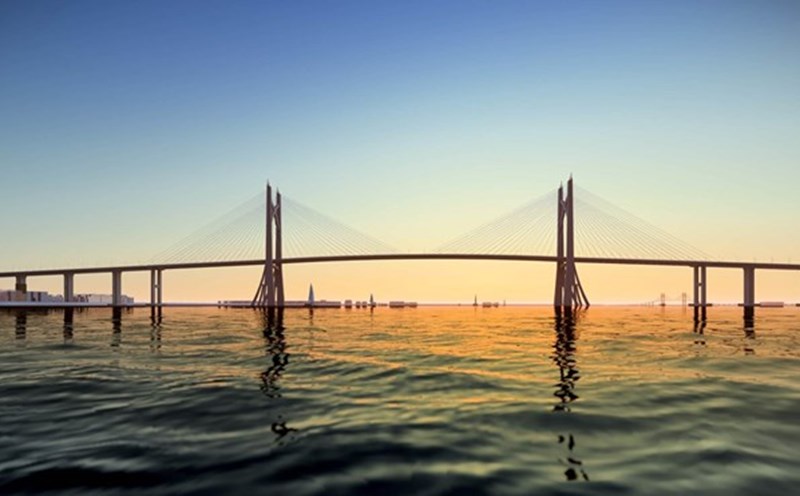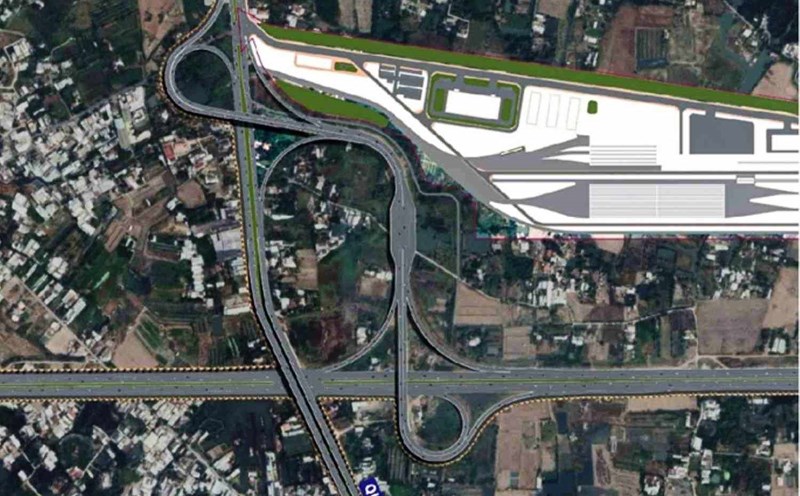The Ho Chi Minh City Department of Construction has just submitted an urgent document to the Ho Chi Minh City People's Committee on approving the investment policy for the project to build an intersection connecting Ben Luc - Long Thanh Expressway with Rung Sac Road (formerly Binh Khanh Commune - Can Gio District).
According to the proposal, the project will form another intersection between the expressway and Rung Sac road, with connecting branches designed at a speed of 40 km/h.
At the center of the intersection, a 50 m radius roundabout is arranged, creating favorable conditions for traffic.
On the Ben Luc - Long Thanh expressway alone, the city will build an additional unit to complete the scale of 8 lanes, allowing vehicles to run at a design speed of 100 km/h.
Meanwhile, Rung Sac road will be built with two two-way underpasses, prioritizing traffic from Rung Sac to Can Gio bridge and vice versa.
Each tunnel is about 610 m long, of which the closed tunnel is 150 m long, the open tunnel and the retaining wall at both ends of the tunnel are 230 m long; the road surface in the tunnel is 10 m wide.

The total investment capital of the project is expected to be nearly 3,000 billion VND, including more than 1,162 billion VND for compensation, support, and resettlement; more than 1,204 billion VND for construction, installation and equipment; the rest is for management, consulting and contingency costs.
According to the plan, the investment policy will be submitted for approval in the second - third quarter of 2025; the project will be surveyed and appraised from the third - fourth quarter of 2025; compensation, support and resettlement will be implemented from the end of 2025 to the end of 2026.
The Ben Luc - Long Thanh expressway interchange with Rung Sac road will start construction in the second quarter of 2026 and be completed in the first quarter of 2028.

According to the Ho Chi Minh City Department of Construction, travel from Binh Khanh, Ly Nhon, Tam Thon Hiep, An Thoi Dong, Long Hoa communes to the center of Ho Chi Minh City currently mainly depends on Binh Khanh ferry. This often causes congestion, especially on weekends, holidays or the rainy season, greatly affecting people's lives as well as goods transportation and tourism development.
The formation of the intersection directly connecting Ben Luc - Long Thanh Expressway with Rung Sac Road is considered a fundamental solution to help shorten travel time, creating conditions for people to easily access medical, educational, and administrative services, while ensuring the ability to rescue and relocate when there are natural disasters and emergency incidents.
In addition, after the merger with Ba Ria - Vung Tau and Binh Duong, the need for traffic connection became more urgent. Previously, traveling between Ho Chi Minh City and Ba Ria - Vung Tau mainly had to go through Dong Nai, causing inconvenience and taking a lot of time.
When the intersection is completed, combined with the investment orientation for a coastal route or a bridge, a sea tunnel connecting Can Gio with Ba Ria - Vung Tau, a completely new traffic direction will be opened.
This connecting route not only shortens the distance, promotes tourism and logistics development, and reasonably redistributes residents, but also contributes to completing the transportation network, creating momentum for socio-economic development for Ho Chi Minh City in the new period.
In addition to the intersection connecting to Rung Sac Street, the Ben Luc - Long Thanh Expressway section passing through Ho Chi Minh City is also about to be invested in two other major intersections, including the intersection with National Highway 50 and the intersection with Nguyen Van Tao Street.











